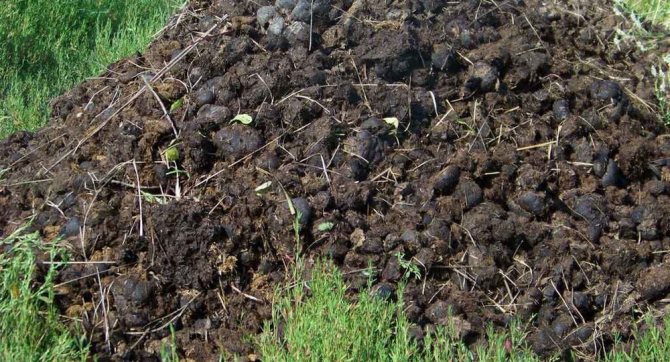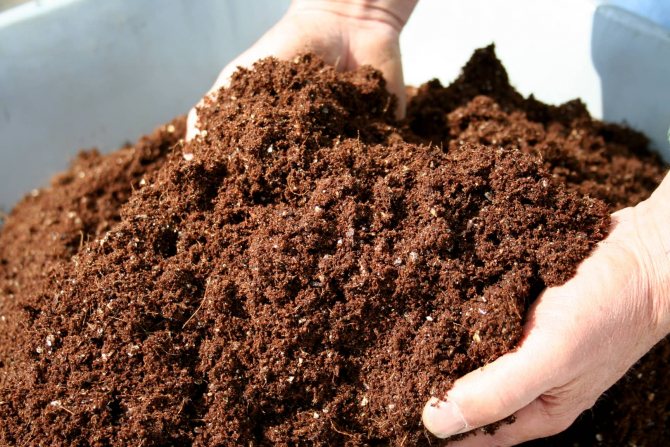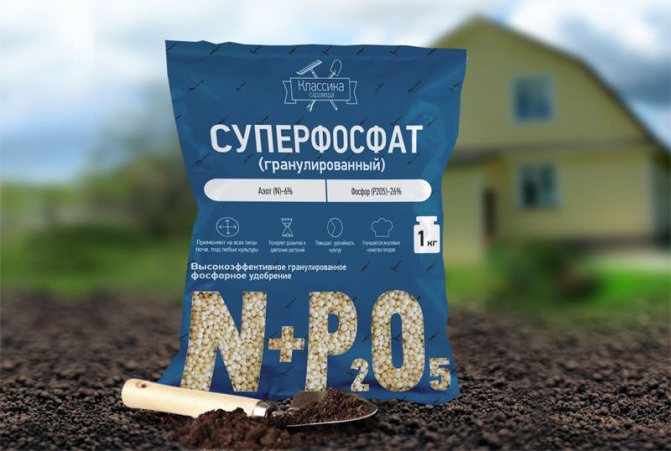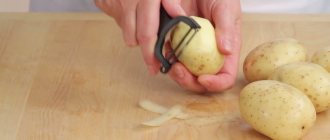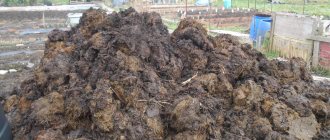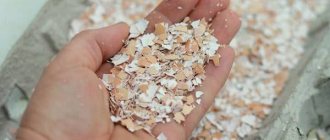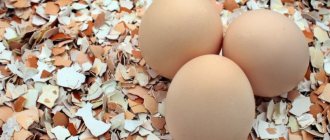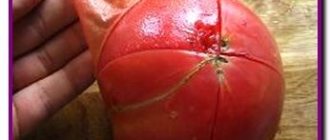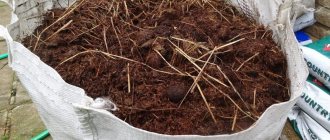Pig manure as fertilizer
Types of manure and their benefits
Cow dung or mullein - the most popular... It is believed that this particular species is more saturated with nutrients than others. It can be used to enrich even the poorest soil. It is able to retain moisture in the soil for a long time, as well as to give up nutrients and trace elements for a long time.
Equine is less available, and therefore not as common as cow. Horse manure is collected in the spring. When using it, it is important to make sure that it gets on the plants as little as possible. It is desirable to use it fresh to enrich the soil. If the manure is contaminated by pesticides or herbicides, it should be left for one year to distill.
Pig manure: advantages and disadvantages
It is used both as an additive to other species and independently. Has the following qualities:
- liquid;
- high acidity - can ruin good black soil;
- slow decomposition period;
- weak heat transfer;
- little calcium in the composition;
- only suitable for warm ground.
You should be careful when applying it to slightly acidic soil. The soil can deteriorate to such an extent that it becomes simply unsuitable for further crop production.
Feces of cattle and pork also differ from each other in the stages of decomposition and decay.
Before eating pork manure, it must be ripe... To do this, sprinkle it with lime. As you know, lime perfectly activates the burnout process. You will need 50 grams of lime per bucket of manure.
Lime can be replaced with phosphate rock. In this case, it is kept for a year mixed with flour in the ratio of 100 grams of flour to one bucket of manure. So nitrogen will not be able to evaporate, and biological processes are activated.
The main reason why pig manure is not popular is its smell and acidity. Indeed, in addition to vegetable food, pigs also eat animals. Due to their omnivorous nature, their waste has an unpleasant, pungent odor that repels many. Very often weed seeds can be found in pig feces.
Due to the peculiarities of the structure of the esophagus, pig feces differ from cattle. In the pork esophagus, acid is not formed, but is simply excreted along with the feces. To rid manure of this acid, the farmer will have to work hard, because too much nitrogen will kill the plants, and the acid will ruin the soil. Pig manure is advised only to compost, and preferably at least two years.
Types of pig manure and their characteristics
It is important to determine the stage at which the future fertilizer is, even before you start using it. Considering that it decays for a long time, it is often started to be used at the stage of semi-rotting.
This dung is about two years old... It has already completely cleared of bacteria and plant seeds, has become dark in color and has lost half of its weight due to drying out. This is the best option for pork fertilization for soil application. They carry it around the site with the following calculation: 5-6 kg per 1 square meter of area.
If you need to feed the plants, the fertilizer is diluted with water in a ratio of 2:10.
Manure that has lain for six months... It can be used even though it contains a lot of microbes and weed seeds.
It is added to improve the soil as a fertilizer during the autumn digging. It is possible to use this fertilizer for plant nutrition. But in this case it is required to dilute it with water in a ratio of 1:10, no less. As experienced gardeners tell, such dressing is very fond of zucchini, cabbage, pumpkin and cucumbers. Given the huge nitrogen content in the composition of this fertilizer, it is forbidden to apply more nitrogen-containing preparations.
Fresh manure is considered to be the waste products of a pig that have lain for less than six months.... It is not recommended to use it for plants, as the high nitrogen content can cause burns. In addition, such manure contains a high content of seeds of various weeds. Be sure to extinguish fresh manure with lime and only then use it.
This is the next stage of rotted manure, which has been lying for more than two and a half years.... It retains very little moisture, but there are as many microelements and other substances useful for plant growth as possible. Due to the fact that this fertilizer has lost about half of its nitrogen in its composition, it is already safe for the roots and stems of green plants.
You can add it to various substrates, or you can add it during the autumn digging.
How to lower acidity
There are several ways to get rid of excess acidity in pork feces:
- superphosphate - add 100 grams of double superphosphate to 10 kilograms of fresh manure;
- dolomite flour - you need 100 grams of flour per 10 kilograms of manure;
- if simple superphosphate is used, it will need 50 grams more;
- lime is a common method, it has a significant disadvantage. Lime not only reduces acidity, but also promotes the breakdown of important trace elements and other useful components;
- phosphate rock - 100 grams of flour is taken for 10 kilograms of manure. With its help, the evaporation of nitrogen from the fertilizer composition is prevented, and it also starts active biological processes well.
How to create humus from pork feces
The best way is with a compost pit.... It is in the compost that all the necessary elements required by plants are usually well preserved. You can buy a compost bin, or you can get by with a compost pit.
The manure placed in the compote pit will be ready in a year, and its active effect will continue for another four years. During the composting process, it will get rid of seeds, germs, helminths and other parasites. Its structure will change for the better: it will become drier, darker, disintegrate when touched, in a word, it will become ready for spreading on the beds.
You can simply put humus in the ground for the winter months. For humus, it will be enough to overwinter with the soil to nourish it. Sometimes it is simply scattered between the beds in late winter.
The acidity problem of the fertilizer can be corrected by simply setting it on fire. Then you get a new fertilizer - ash, which, according to some indicators, is even better than humus.
You can not use pork humus in greenhouses, you should remember about its tendency to oxidation and do not provoke fertilization with excessive moisture.
We all know how difficult it is to grow a good crop in the beds and in the garden without the use of fertilizers. Preference is always given to the waste of animals and birds that eat plant foods, i.e. - manure.
Manure is a very useful and necessary fertilizer. The best is horse, cow, bird, rabbit, in some cases - pork. Each type of manure has its pros and cons, but using it "wisely" will in any case give a positive result. Gradually decomposing in the ground, it will feed the plants with "usefulness", including nitrogen, phosphorus, potassium.As well as magnesium, calcium, trace elements. Improves soil structure, which in turn will breathe better and retain water. But problems can be avoided only when manure is skillfully applied. Why? It's simple - dung, it's not only good, but also harm. Who does not know - fresh manure is a breeding ground for weeds, ubiquitous microbes and even pests... It contains a lot of weed seeds and harmful microorganisms, which, if used incorrectly, will eventually show themselves "in all their glory." Everyone has heard about the bear that we get into the garden together with the introduction of fresh manure.
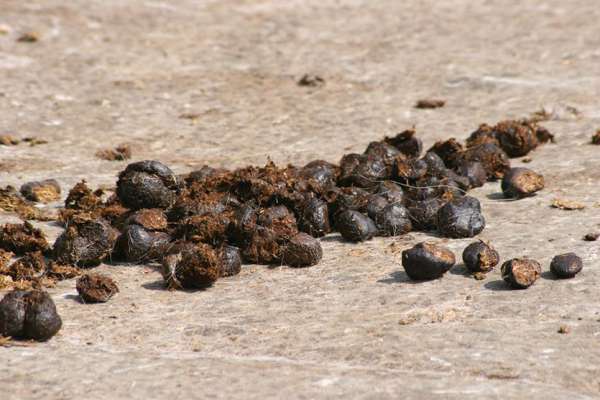
A very important point is compliance with the norm... Excessive use of fresh manure will lead to an overdose, which in turn will contribute to the accumulation of nitrates in both the soil and plants. You won't be able to try ecologically clean vegetables and greens.
Humus or rotted manure is introduced (subject to the norm) without fear, but fresh is not suitable for all crops... It is good to use it for planting cucumbers, as well as zucchini and cabbage. Rose bushes, lilacs, planting of peonies, clematis, dahlias with generous flowering will thank for the introduction of manure. Fresh manure for bulbous crops is applied two to three years before planting. For carrots, pea and onion beds, etc. fresh - in autumn, and in spring - only rotted.
An approximate diagram of how to act after applying fresh manure will be as follows. Let's say that this spring you fertilized the beds with "fresh svezhak", where you plan to plant pumpkin seeds, zucchini, cucumbers, etc. The next year, plant tomatoes, carrots, radishes, radishes, red beets in this place, and after another year, use a garden bed for planting legumes and herbs.
Solutions cannot be made from fresh manure, you can easily burn the plant leaves and roots. But to use it for fermenting, which for a while is infused in the sun in a barrel - quite. But the finished fermenting agent must be diluted in a certain proportion with water to avoid damage.
It is quite appropriate to use fresh manure to create warm beds and greenhouses.... It is buried in the soil to a depth of at least two bayonets of a shovel, covered with earth from above and covered with foil. Thus, the soil temperature rises, which has a beneficial effect on the plants.
If you have doubts about the preferences of a particular culture, it is better to refrain from introducing "fresh". Punch it, layer it with plant debris, foliage, chopped straw, etc. Add a generous amount of wood ash or dolomite flour to help keep the soil from acidifying. Fold neatly, cover tightly with plastic wrap. If it is autumn, then until spring this "pie" will accumulate nutrients, become more productive and efficient. You will get a wonderful rotted humus-compost, suitable for most plants.
Newcomers to the gardening business always ask themselves the question of when it is more expedient to apply manure - in autumn or spring time. Agronomic science advises the following: on the lungs sandy and sandy loam soils preferable in spring, on heavy clayey - in autumn... Why is it undesirable to apply manure on light-textured soil in autumn? It turns out that from light soils, manure components are washed out by melt water and rains into the lower soil layers, where they are not always available for plants. And even - into the ground waters. That is why it is still very important not to "overdo it" with the introduction of manure. Contaminated groundwater is a direct threat to the environment.


For other soils, it does not matter - in the spring or autumn to introduce organic matter.
Another important point. Never leave organic matter on the site for the winter, scattered and not embedded in the soil.In this situation, the work will be wasted. The nitrogen contained in the manure will “smoothly pass” into the air, and the soil will lack potash and phosphorus components. Wash off with water.
But this does not apply to fresh manure. Fresh, you can just scatter and leave it in the garden without digging... Over time, it will penetrate deeply and replenish the earth with useful elements.
The correct use of manure will never have a harmful effect on the plants, but will only contribute to obtaining luxurious and generous yields.


It is used as a top dressing for garden plants. But you should know that such a fertilizer has its own characteristics. Pig manure can be easily obtained in large volumes, it contains more useful components than feces from cattle. It should be remembered that there are also negative aspects that prevent many gardeners from using this type of fertilizer in their beds.
How and for what purpose can it be used?
Pig excrement is used for:
- heating beds of greenhouses, greenhouses or vegetable gardens;
- mulching;
- restoration of soil structure;
- replenishment of nutrients and microelements spent on plant development.
Heated beds
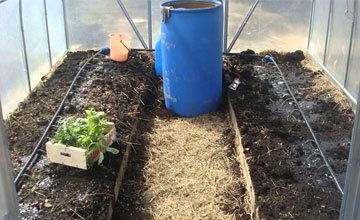

For heating beds before planting seeds or seedlings first remove the fertile soil layer, then dig a trench for laying pig manure.
It is advisable to insulate the walls of the trench with dry manure, compressed hay or any other organic material.
This will reduce heat loss, because the soil temperature in winter rarely exceeds +5 degrees, and for normal decay in excrement a temperature of +45 degrees is required.
If the walls are well insulated, then the heat released by humus-forming bacteria is enough to heat the material to the desired temperature. We described the sequence of actions in more detail here.
Mulching
For mulching, they use ready-made humus, the methods of obtaining which we talked about here (humus).
You can mulch at any time of the year, but pig manure mulch less effective than excrement mulch from other animalsas well as shredded plant residues such as sawdust or shavings.
We described mulching with animal excrement in detail in this article, so follow the recommendations outlined there regarding humus.
Restoration and improvement of soil structure
To restore and improve the structure of the soil, humus from bedding material is best suited, because straw or chopped wood in it has a much larger fraction than digested food.
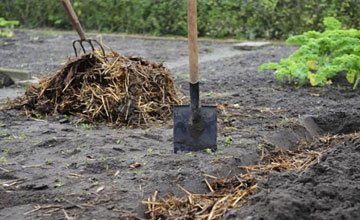

BUT what is the biggest (up to a certain limit) the size of solid elements in excrement, the better such humus loosens the soil, increasing its ability to transmit and absorb moisture.
Therefore, humus is scattered across the field, then plowed or manually dug up it to mix the soil with humus.
It is best to perform this operation before spring plowing, due to which the soil will be better prepared for receiving seeds or seedlings, but it can also be carried out in the fall.
Replenishment of nutrients
To replenish the spent nutrients and microelements of humus applied in the fall before plowing or digging a site.
After cultivating the land with a plow or a shovel, humus will mix with the soil and not only restore its structure, but also fill it with nutrients, so that by next spring the soil will be completely ready for accepting plants.
If this work did not work out either in the fall or in the winter, then it is possible to lay out humus around the trunks of plants throughout the year, due to which it will mix with the soil during watering, and also fill it with nutrients.
This will increase the amount of nutrients available to the roots, which means it will speed up the development of the plant.
Can pig manure be used as fertilizer
Frankly speaking, the use of fertilizer in the garden in this capacity implies preliminary preparation... The bottom line is that in the body of large horned animals, whose product has to be encountered more often, food passing through a complex digestive system is subject to special processing. For example, due to methane fermentation without the participation of oxygen, the acid decomposes into particles containing nitrogen.
But in pigs, the digestive tract is different in its structure, the acid comes out together with feces. But there is nothing terrible in this - the manure should be composted, which will allow the acid to decompose into useful components.
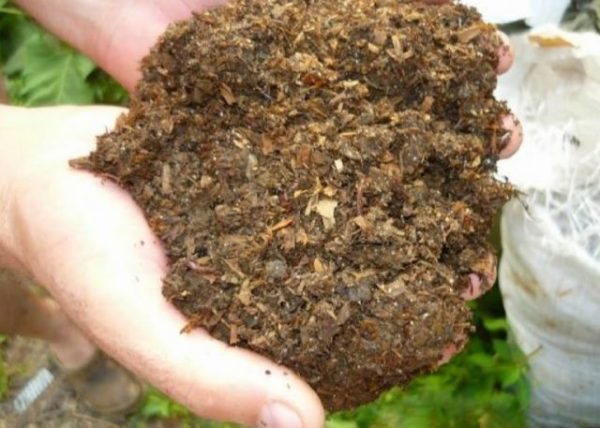

Pig manure in hands close up
The use of such manure as fertilizer in a greenhouse or greenhouse, in which the humidity level is always high, is not recommended. Otherwise, there is a possibility of an increase in oxidative processes. To neutralize it, add to the compost (at your discretion):
- dolomite flour at the rate of 1 to 100;
- superphosphates - one and a half to two kilograms per centner;
- double superphosphates - from seven hundred grams to a kilogram for the same weight;
- five hundred grams of lime per hundred pounds of manure. Note that this option is less acceptable, since many useful components will disappear in the fertilizer.
This can even happen if fresh manure is simply scattered over the soil surface before the onset of the winter season. The problem is that the fertilizer contains an excessive amount of ammonia and nitrogen, and this amount depends on the presence of litter in the pigs during the period of their maintenance.
Speaking about litterless manure, we mean a nitrogen level of fifty to seventy percent, contained in a soluble form, which is very convenient for assimilation by crops.
Animal manure as fertilizer
If it is not possible to stock up manure on your own, then you can purchase it in specialized stores. Apply:
- cow dung
- horse manure
- mutton manure
- pig manure
- chicken droppings
Experienced gardeners plan planting in advance, so manure should be purchased about a year before use. Fertilizer bags are left in a ventilated place where they will not be affected by precipitation. It will not need to be treated with chemicals or other additives before use.
Cow dung is most often used, it is most saturated with nutrients. It is cheap, if there is a livestock farm nearby, then you can agree to pick it up even for free. Cow dung is used on poor soils. It retains moisture and can release organic matter throughout the season.
Horse manure is also popular among gardeners. It is also not difficult to get it. Horse manure is collected in the spring. The manure should be clean, without the addition of sawdust, the best option would be a mixture with straw or peat. You need to use horse manure carefully, away from plant stems. The fresher it is, the more nutrients it contains.
To prevent horse manure from quickly rotting, it is spread on compost or on a concrete surface. It can be used several months after collection. If pesticides or herbicides have got into it, then it can be used no earlier than after a year.
Sheep and pig manure are used somewhat less frequently. In terms of composition, it is less nutritious, but colder and moist, therefore, before processing and using it, you need to stock up on theoretical knowledge. According to the storage method, lamb and pork manure are similar to horse manure.
Chicken manure is also used in horticulture. It contains a large amount of nitrogen. It is not used in isolation, but together with compost.
Benefits and harm in the garden
It is imperative to know the stages and timing of the decomposition of organic matter, because it depends on which soil and for which plants manure can be applied.
Fresh, it should not be used for chernozem and other soil compositions enriched with humus. They can become unsuitable for planting plants.
The ideal option is alkaline earths containing a lot of carbonates. Fertilizer acid will make the soil neutral and improve its condition. In other cases, the waste is pre-treated before use.
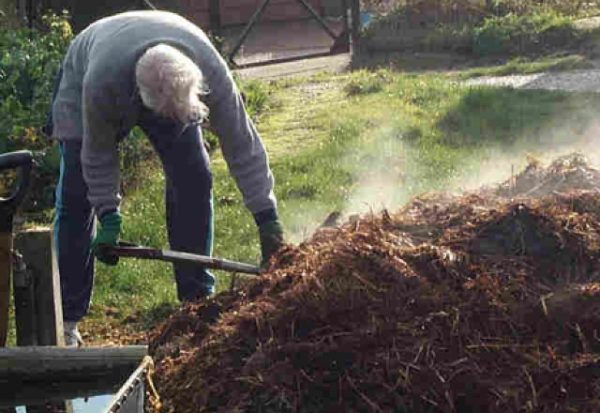

Preparation of pig manure for use
Pig manure mixed with horse manure is suitable for any garden bed. If sawdust or straw is mixed with waste, they are allowed to be brought into loamy soil.
The effect of pig manure on the vegetable garden and orchard
For garden, garden plants and soil, a certain feeding is needed. For example, for black soil, pig manure as a fertilizer can not be used fresh. On the other hand, such a substance will justifiably be used for enrichment of alkaline soils with a lot of carbonates.
As a result of the neutralization reaction, this soil will be improved. Semi-ripe manure has the most favorable effect on plants with active nitrogen consumption. These include root vegetables, some flowers, eggplants, peppers. At the same time, other fertilizers containing nitrogen cannot be used in parallel.
For feeding early vegetables, it is best to use humus. We use the rotted manure of pigs for garden bushes, trees, corn.


Fertilizing the soil with manure, you should clearly understand that sometimes you have to wait for the expected result for more than a year. A good harvest will delight the farmer later.
Fertilizer composition
There is a lot of phosphorus in feces, but if you compare it with an analogue of mineral fertilizers, it is better consumed by plants, because it is not fixed in the soil. Potassium is also perfectly absorbed, as it is contained in highly soluble compounds. If we determine the average values, then the dry fertilizer contains:
- organics - 86 percent;
- nitrogen - 1.7;
- ash - 14;
- phosphorus - 0.7;
- potassium oxide - 1.2.
Pig humus is best used for early vegetables - it should be applied to the soil in the fall. Pumpkins, cucumbers, onions, carrots, cabbage and zucchini are planted on the beds fertilized in this way.
Manure in a fresh and semi-rotten state is allowed to be used for plants that belong to the first group in terms of nitrogen consumption. - potatoes, peppers, eggplants, blackberries, cherries, raspberries, dahlias, cloves and others.
But the rotted look is better to lay under tomatoes, beets, corn, garlic, currants, apple trees, pears, juniper and others.
Quite often, manure added for perennial plants shows its qualities only the next year.
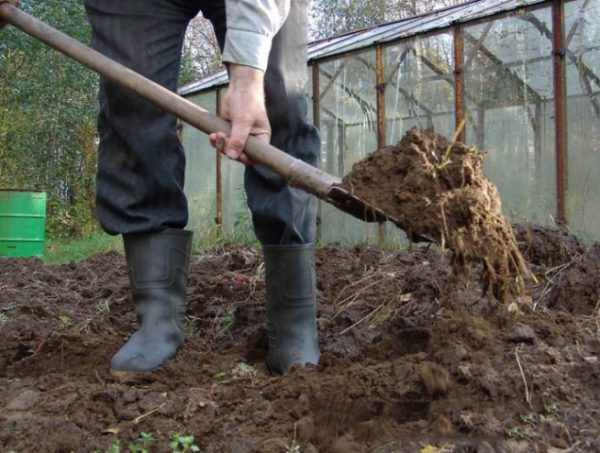

Laying pig manure mixed with soil on the beds
Organic species
Organic food can be purchased at a specialty store or from private farmers. In the form of granules or dry mix. For farmers, fresh droppings are more common.
The following types of manure are used as a nutrient fertilizer:
- bovine;
- horse;
- mutton (or goat);
- pork;
- bird droppings.
Horse dung is the most valuable in terms of nutritional value and useful qualities. It contains an optimal ratio of the most important mineral components for agricultural crops.
Mullein is a very popular organic species among gardeners and private farmers. Cow dung contains a lot of mineral components useful for plants, but their composition is slightly different from horse manure.
Small ruminant manure is as nutritious as mullein. It is enriched with such important substances as nitrogen, phosphorus, potassium. The low moisture content contributes to the fact that the fertilizer turns out to be concentrated, therefore, it must be diluted with water before direct use.
Pig droppings have been found to be less nutritious than other organic fertilizers. It contains fewer mineral components and practically no calcium. Just like mullein, pork droppings cannot be used fresh. The main reason for the lesser popularity of pig manure is its composition. Since pigs eat not only plant foods, their waste products may contain components "unnecessary" for plants.
Bird droppings are very concentrated. Improper use can kill plants. Chicken and pigeon droppings have a greater nutritional value, and ducks, turkeys and geese have less nutritional value.


Application in practice
A number of features do not always make it possible to understand whether manure can be used in the form of a fertilizer composition. The main thing to remember is that the degree of benefit and harm depends on what stage of decomposition the manure goes through. This is due to the fact that during decomposition the material significantly changes its composition. There are four types of freshness:
— fresh... This option lasts no more than three months, contains the maximum amount of acid, nitrogen and other harmful elements. They can spoil any soil and harm plants that need nitrogen. But if the soil should be urgently fertilized, and there is no other manure, then you should simply lower the level of its acidity by mixing with waste received from other animals;
— half-over-mature... Its term is from three to six months. There is still a sufficient amount of toxins in it, but the level of biological pollution is significantly reduced. This fertilizer does not spoil the plants, but nevertheless it must be applied carefully (up to 3 kg per square of area), and only in the fall;
— rotted... Lies from six months to a year. Severely shrunken, having lost almost half of its mass. The acid and nitrogen levels are reduced. Such material is brought in up to seven kilograms per square meter and it is better to do this in the fall in order to provide an opportunity to ripen completely;
— humus... Lies at least a year. It contains almost no acid, the nitrogen level is optimal, weed seeds and microorganisms disappear. It is added to the soil at any time.
Manure decomposition stages
Pig manure, like any other, goes through four stages of "maturation", indicated in the table below.
Table 1. Stages of manure decomposition
| Stage | Duration |
| Fresh | Up to six months |
| Semi-mature | Six months to a year |
| Overripe | From one to two years |
| Humus | More than two years |
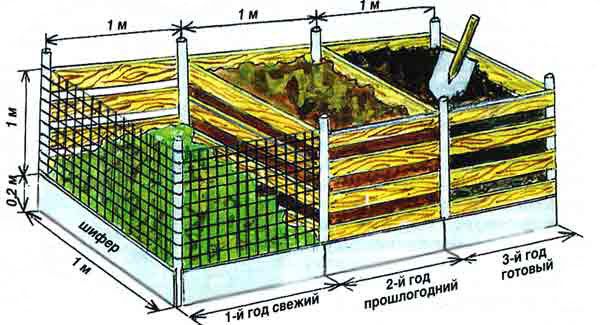

Maturation of compost by year
If other types of manure are sometimes allowed to be used in rotted or even semi-rotten form, the use of pig manure is possible only when it has reached its final condition. Again, any manure, regardless of its type, only multiplies its nutritional value as it is composted. The quality of manure is largely determined by the time during which it was stored.


Any type of manure undergoes four stages of decomposition, acquiring new nutritional properties
Let's consider each of the above stages in more detail.
Fresh manure
Manure recently obtained from animals is strongly discouraged for consumption. In the best case, you will get off with numerous burns of the planted plants, in the worst case, you will infect the soil with parasites, or transfer the weed seeds that remain undigested in the bowel movements. In addition, plants simply cannot absorb the nutrients of fresh manure due to its inappropriate condition.


Fresh pig manure is not safe to use in garden beds
If you absolutely want to add fresh pork manure, it should first be sprinkled with lime (in the quantities indicated in the chapter on manure neutralization) and mixed with horse manure in approximately equal proportions.
Regarding the age of fresh manure, the points of view do not agree - someone calls the manure fresh up to six months, someone - up to three months.
Semi-ripe manure
Manure is considered semi-rotten up to six months. It becomes loose due to its initial decomposition.Semi-ripe manure (if we are not talking about pig) in most cases is used to fertilize autumn beds. Such manure provides the soil with good protection from the coming frost.
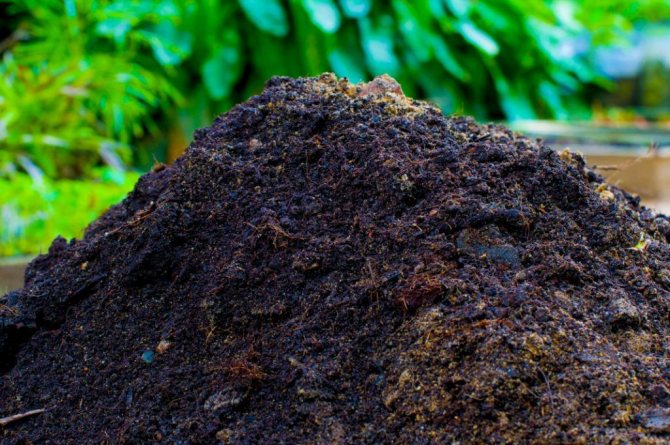

Half-ripe manure is much safer than fresh manure, but still quite aggressive
Unfortunately, in this state, the manure is still quite liquid and can still contain weed grains, while most of the bacteria have time to die by this time. If you still want to use semi-rotted pig manure, then about three kilograms of product will be required per square meter. Processing is carried out towards the end of autumn.
When processing young plants with semi-rotted manure, it is necessary to dilute the manure with liquid in proportions of 1:10. Since pig manure has a high nitrogen content, no additional fertilizing with nitrogenous fertilizers is required for the plants.
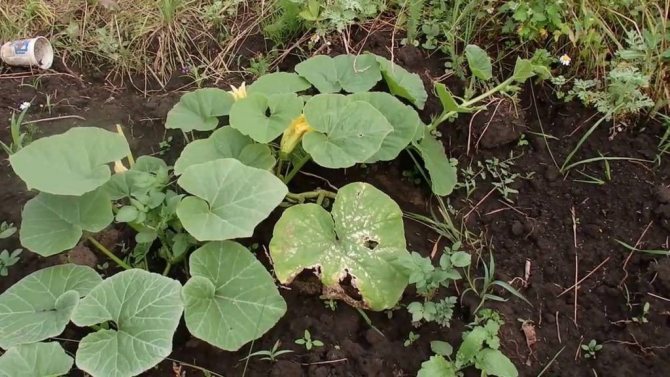

Some plants, such as pumpkin, take well fertilization with pig manure.
Nitrogen-deficient crops that work well with pig manure include:
- cabbage;
- zucchini;
- pumpkin;
- cucumber.
Rotten manure
The rotted manure is about one year old. Such manure is already considered practically safe for use due to the fact that most of the weed seeds and pathogenic bacteria have died in it. As the overheating progresses, the external signs of the resulting product change:
- manure decreases in size and loses its original mass due to the fact that over time more and more liquid leaves it;
- manure takes on a darker shade, more like black than brown;
- if you used straw when composting manure, it becomes barely visible in a single homogeneous mass.
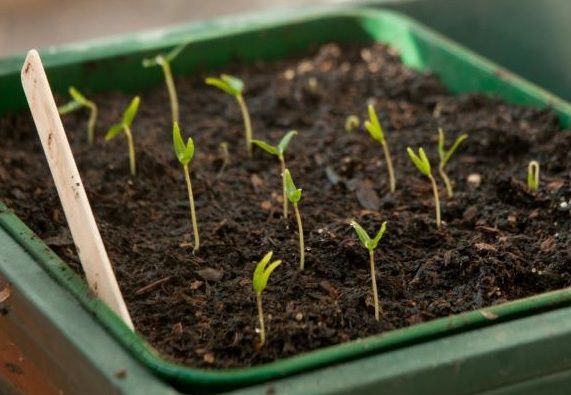

Seedlings take root well in a soil mixture prepared with the participation of pig manure
Overripe manure is used as:
- independent fertilizers;
- ingredients for nutrient mixtures used for transplanting seedlings;
- components for fertilizing, diluted in water.
The nutrient components of rotted manure are well absorbed by plants that do not get burned by fertilization.
When using manure as an intrinsic product, it is distributed over the soil at the rate of 7 kilograms of substance per square meter. If manure is mixed with water, then you need to take 2 parts of the product and 10 parts of the liquid.


To neutralize pig manure, farmers sometimes mix it with horse manure.
By the way! If you want to speed up the decay process, mix pork manure with horse manure.
Humus
Humus is obtained at a deep stage of organic decomposition. In appearance, it becomes a completely homogeneous mass, the individual components of which cannot be distinguished. Pig manure reaches this condition two years after the beginning of its "journey". Humus contains the minimum amount of moisture and the maximum amount of nutrients, therefore it is considered one of the most valuable fertilizers.


Humus is considered the healthiest and most nutritious type of manure
Best of all, humus demonstrates itself in the following types of work:
- digging, carried out both in the autumn and spring seasons;
- processing of holes;
- preparation of mulch;
- creation of nutritious soil mixtures;
When applied to the soil, manure is mixed with the soil in a ratio of 1: 4.


Before adding humus to the garden, it is necessary to dilute it with soil.
Due to the fact that the nitrogen content in humus is minimal, even pork manure can be safely used when fertilizing fragile plants (and one should not forget about careful dosing of the product).
The two main methods of storing manure, as well as their strengths and weaknesses, can be read below.


Manure storage methods
When fertilizer cannot be applied
Permanent manure contains high levels of nitrogen concentration, which can burn plants or simply feed them, posing a health hazard. Applying fresh product to the soil will not give a good effect, because the nitrogen will evaporate.
If you want to act correctly, then apply pork fertilizer during the autumn digging - with humus or rotted, having at least a year's exposure.
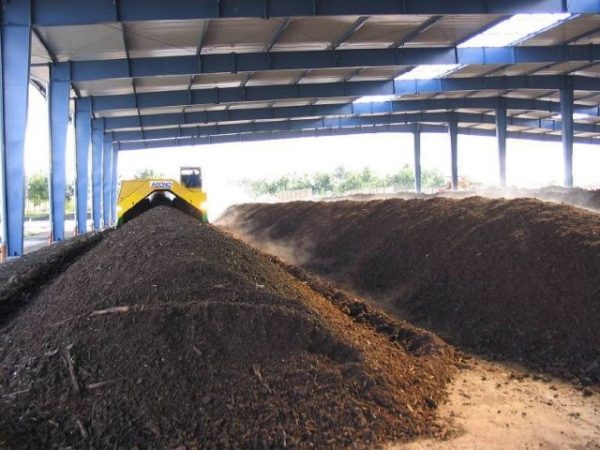

Industrial storage of pig manure
Why Recycle Pork Feces
How pig manure is processed
Pig excrement is not yet a complete fertilizer. In addition to useful substances, it includes:
- harmful bacteria that are dangerous to humans;
- fungi and putrefactive bacteria that can damage garden crops;
- weed seeds, which will sprout as soon as they enter the soil;
- remnants of drugs that were used to keep animals;
- eggs of worms that remain in the ground for up to 5 years;
- high content of ammonia, which can damage plants.
How to make fertilizer from manure yourself
The most suitable way is composting. So the nutritional value of the fertilizer will increase, and the unpleasant odor will disappear.
Feces must be applied in layers, between which straw is laid, lor sawdust. The compost must be in contact with the ground so that the worms can hide in the ground for the winter. To raise the level of nutritional value, additional organic matter should be added from plant residues. Having prepared the pile, you need to wait a year for the compost to finally mature.
This can be achieved by increasing the area of the heap and lowering its height. In the finished form, the compost will be free-flowing, dark, smelling soil. If there is a rotten smell, it means that the waste does not rot, but rot. The pile must be stirred to provide oxygen access.
Having studied the procedure for using pig manure as a fertilizing component, it is possible to achieve the enrichment of plants with useful components without incurring unnecessary costs. It is good to use such material if there are pigs on the farm.
Pig manure is easy to obtain in large quantities and has a more beneficial composition for plants than cattle waste. It also has negative qualities, because of which many do not dare to use it. In order for manure to be beneficial, you should know in what cases it can be used, how to properly prepare it and apply it to the soil.
How to prepare compost correctly
Pig manure composting eliminates unpleasant odors, increases its nutritional value, so this substance is optimal for fertilization.
When laying compost, it is important to take care of its contact with the ground, as earthworms must be able to move freely within the compost. It is they who determine the rate of decay.
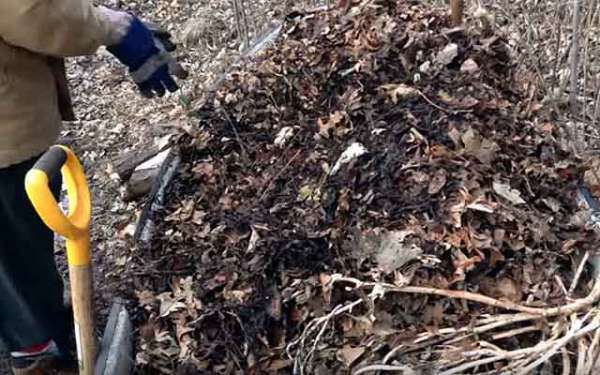

Manure should be laid in layers, overlapping each layer with straw, leaves, sawdust. Additionally, you can use plant residues of various origins. To get rid of helminth eggs, bacteria, and other parasites, it is recommended to regularly loosen the manure mass. It is better to reduce the height and increase the area of the compost heap. A high-quality substance is characterized by flowability, dark color, and lack of smell. There should not be the slightest sign of rot. Such fertilizer can be stored for 3-4 years, preserving its properties. The finished compost should be put into the ground during spring digging.


Dry animal faeces can also be burned to maximize the utilization of pig waste. Before that, they must be thoroughly dried. Such heat treatment will completely destroy all parasites, weed seeds. It is best to use this top dressing as a mineral fertilizer, which is applied to the ground during autumn plowing in the amount of 1.5 kg per 1 sq. m.
Are you interested in the topic of efficient disposal of pig manure? If you are interested in the article, please, like it. Share information on social networks.
Can I use it?
Due to some peculiarities, it is not always clear whether pig manure can be used as fertilizer. The main thing to know is that the balance of benefits and harms depends on what stage of decomposition it is at. This is due to the fact that the composition of the material changes significantly during the decay process. Depending on the freshness, manure is divided into 4 types:
- Fresh - no more than 3 months old. The content of acid, nitrogen and other harmful components is maximum. Such manure will ruin any soil and harm even plants with a serious need for nitrogen. If you urgently need to fertilize the soil, but you can't get anything else, fresh manure can be used by first reducing the acidity and mixing it with the waste of other animals, for example, horse.
- Semi-matured - lain from 3 to 6 months. In such manure, the content of toxic compounds is still high, but biological pollution is noticeably lower than that of fresh waste. When using such fertilizer, the probability of damage to the crop is low, but nevertheless it should be applied to the soil in a small amount (no more than 3 kg per 1 m²) and only at the end of autumn.
- Overripe - from 6 months to 1 year. Such manure dries out strongly, loses up to half of the original mass. The concentration of acid and nitrogen begins to decrease, the material becomes less hazardous to plants. It can be applied to the soil in an amount of up to 7 kg per 1 m². It is recommended to do this in the fall, so that it has time to ripen by the spring.
- Humus - lain for more than a year. The acid in it is almost completely neutralized, the ratio of nitrogen to mass becomes optimal, microorganisms and weed seeds completely disappear - manure can be safely used by adding it to the soil at any time of the year.
It is not recommended to exceed these norms, even if the plantings have a need for nitrogenous fertilizers - until it turns into humus, manure remains dangerous for plant roots.
Rotten pig manure as a fertilizer is compared in usefulness with cattle waste. For best results, it is recommended to mix it with other waste.
Chemical composition and features of the material


Since manure is formed as a result of the digestion of food, it contains the original or altered substances present in the feed that the animals eat.
About a quarter of the mass of fresh excrement is organic matterobtained as a result of treatment with enzymes of starch and cellulose.
About 70% of the mass of fresh excrement is water, its amount depends on factors such as:
- pigsty design (in rooms equipped with a urine drainage system, the moisture content of the manure is lower);
- method of cleaning excrement (when cleaning with a scraper method or manually, the humidity is noticeably lower than with flush cleaning);
- the presence or absence of bedding that absorbs moisture and reduces the moisture content of the excreta.
Also, pork feces contain much more ammoniacal nitrogen, which is one of the reasons for their high toxicity.
Like the excrement of other animals and birds, pig manure contains phosphorus in the form of P2O5 oxide, but its amount is very small and amounts to about 0.2% of the mass of fresh feces. The amount of calcium in the form of lime (CaO) is also less than in other types and is about 0.18%.
There are also other chemical elements in the excrement of pigs that are characteristic of any waste of the vital activity of animals or birds, but their number does not exceed tenths and hundredths of a percent.
Is there a benefit?
Fresh pig manure has significant disadvantages:
- increased acidity;
- increased nitrogen content;
- long decomposition;
- low heat transfer;
- high content of weed seeds and pathogens.
Most of the disadvantages are associated with the pig's digestive characteristics. In the intestines of cattle, food undergoes prolonged processing and gets rid of acids, which break down into simpler and safer nitrogen-containing substances. Food passes through the pig's digestive system quickly, does not have time to completely decompose - as a result, the acid is released along with the manure. In addition, pigs are omnivorous, which is why they do not have enough enzymes to digest plant products - this is associated with the appearance of weed seeds in the manure.
Despite the negative qualities, it is possible to fertilize the land with pig manure, although this requires thorough preparation. First of all, you need to neutralize the acid; This can be done in several ways:
- mix manure with dolomite flour in a ratio of 100 to 1;
- add superphosphate in the amount of 1.5–2 kg per 100 kg of manure;
- add 500 g of lime to 100 kg of manure - in this case, the fertilizer will lose not only acid, but also most of the nutrients, so this method should be used as a last resort.
A high nitrogen content is both good and bad. This element is necessary for plants, but in excessive quantities it burns their roots. To slightly reduce the concentration, you need to properly maintain the pig - the composition of the manure depends on whether the animal has litter. Litter waste contains almost half the nitrogen content of litter waste.
After neutralization - by converting the manure into humus or adding the above substances to the fresh material - the pros begin to outweigh the minuses. In addition to toxic compounds, the composition of pig manure contains useful substances:
- organic - 80–86%;
- nitrogen - 1.7-2.6%;
- ash - 14–20%;
- phosphorus - 0.7-1%;
- potassium oxide - 1.2-2.1%.
These substances are in a soluble form, which facilitates their absorption by plant roots. In dry humus, their mass fraction is higher than in cattle manure.
If fresh pig manure is used thoughtlessly, it will harm the plants rather than help. Proper preparation and neutralization of negative properties will make it a good substitute for other organic fertilizers.
Compost pits and heaps
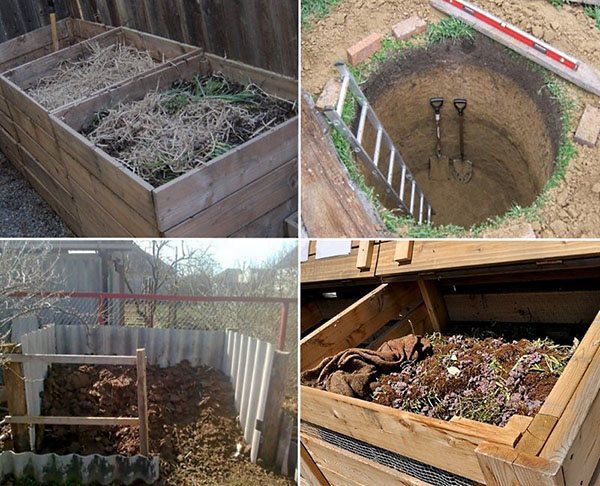

Compost pit is the most common and one of the best quality methods for obtaining fermented manure. This method of processing further guarantees the use of pig manure as a quality fertilizer. A little ash, lime or superphosphate can be added to the compost pits (5 kg per 100 kg of manure). This will lower the acidity. Contact with the soil will reduce nitrogen, but no plants should be planted around the pile or pit for several years.
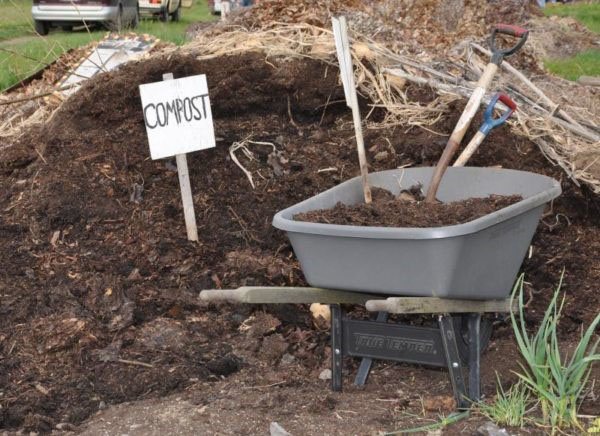

Burning manure


If the manure is dry and quality and speed are important to you, not quantity, then it can be set on fire. It is also a great way to dispose of pig manure. This will ensure:
- deprivation of moisture;
- destruction of weed seeds, microorganisms and helminth eggs;
- decomposition of acids;
- balancing nitrogen.
For the greatest benefit from the resulting ash, you should mix pig manure with dry leaves, straw or horse droppings. This is not humus, but its full replacement in case of urgent need for soil fertilization. It can be sprinkled on the beds in the fall or early spring. Ashes can be mixed with water (1 glass per 10 liters of water) and water the plants.
Pig manure dung has a very high heat transfer and energy content. Therefore, this method is the answer to the question of what to do with pig manure if you do not need it as fertilizer. Biofuel made from manure, not only from pig manure, is already widespread in the CIS.
This ash is a concentrated fertilizer. It is worth adding it to the soil in small quantities to prevent the reverse acid reaction - alkaline. It is also worth digging up the site.In no case should you use this ash instead of wood when spraying plants.
Is it possible to fertilize a vegetable garden with pig manure? Of course. However, you should not forget the recommendations already listed.
Which manure is better - video


When creating optimal conditions for raising pigs, manure removal in a pigsty and further utilization of animal waste products play an important role. Sanitary and hygienic well-being is a guarantee of prevention of many diseases, healthy growth and development of young animals. In addition, the composition of pig manure contains many organic substances, phosphorus, nitrogen in a form available for garden and garden plants, so it can be used as a useful fertilizer.
Pig manure fertilization
It is important to know the stages and timing of the decomposition of organic material also because it depends on which soils and crops can be fed to them. Fresh manure should not be added to black soil and other humus-rich soils, so as not to make them unsuitable for planting. It cannot be used in greenhouses with high humidity, so as not to accelerate the oxidation process. At the same time, due to low heat transfer, fresh waste will be ineffective in cold soil.
Pig manure is ideal for alkaline soils with a high carbonate content. The acid contained in the fertilizer makes the soil neutral and improves its condition. In other cases, the waste must be prepared for use.
Rotten or mixed with horse manure, pig manure is suitable for all types of soil. If you add sawdust or straw to the waste, you can add them to loamy soil.
Pork humus is best used with early vegetable crops - for these, it must be applied in the fall. Such plants include pumpkins, cucumbers, onions, cabbage, zucchini, carrots.
If pig manure is used, other nitrogen fertilizers cannot be used.
Fresh and semi-rotten types of manure can be used to fertilize plants belonging to the first group of nitrogen requirements:
- vegetables - potatoes, peppers, rhubarb, eggplant;
- flowers - peony, dahlia, rose, violet, lilac, balsam, carnation;
- fruit - blackberries, plums, raspberries, cherries, strawberries.
Fertilization with rotted manure is suitable for plants of the second and third groups of nitrogen demand:
- tomato, beet, garlic, corn, leafy vegetables;
- bulbous flowers, juniper, delphiniums, primroses, annual flowers;
- currant, pear, apple, gooseberry.
In most cases, after using fertilizer with perennial plants, the result will be noticeable only in the second year.
Manure disinfection
For the sake of fairness, it should be noted that there is no manure that would be recommended to be used immediately after receiving it on the beds. Animal waste in any case should undergo minimal processing, which will take time. There are two main reasons for the need to handle manure:
- no livestock breeder can vouch for the health of every individual. Even if his herd is in very good condition, it is likely that infectious agents or parasites will appear in the stool of some animal, which will subsequently settle in the soil, making it unsuitable for planting during disinfection;
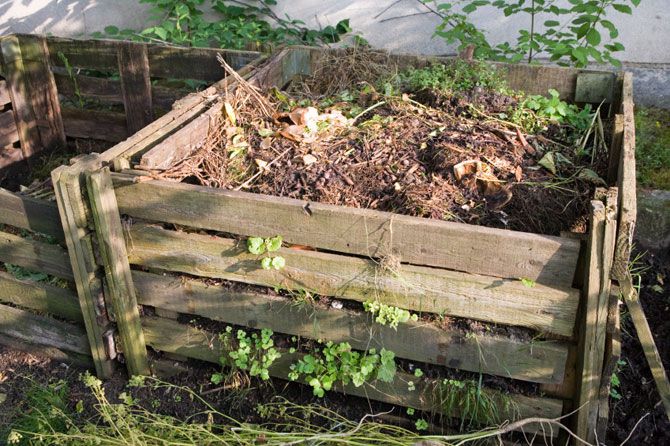

Before using the manure of any animal, it is advisable to wait for the final stage of its decomposition. - if the animal actively consumes grain feed, then there is a high probability of finding weed seeds in its waste that have not been digested properly and are ready to repopulate the garden.
How to apply?
The main idea is clear: you should use pork manure in a rotten form and in late autumn, closer to winter - in this case, it will be most useful. The question is how to properly prepare humus. You can use one of four methods to solve it.
Composting
This process not only improves nutritional properties, but also removes unpleasant odors. For cooking, you can use an ordinary pit or a special container.
Compost is prepared according to the classical technology - manure is laid in layers, between which straw, leaves or sawdust spreads. It is recommended to put the material on bare ground so that earthworms can get into it - they significantly speed up the process of converting manure into humus.
To remove pork parasite eggs, harmful microorganisms and weed seeds from the manure, the compost should be loosened.
The compost matures for at least a year; the finished fertilizer retains its properties for up to 3 years. Readiness is determined by its appearance - humus has a dark color and crumbly structure, it loses up to 75% of its original mass.
Laying in the soil for the winter
After the first snow, a hole is dug, fresh manure is poured into it and covered with a layer of soil 20–25 cm thick. By spring, the waste will turn into a semi-rotten fertilizer - it can be left in the hole for a longer period or used with plants most suffering from nitrogen deficiency.
Another option is to bury the manure between the beds. Next year, these rows can be used for planting.
Accelerated cooking
One of the quickest methods for preparing fertilizers is to artificially neutralize harmful compounds. Pig manure can be mixed with horse manure, lime, straw and other substances - the recipes are described above. It is impossible to immediately add such a mixture to the soil - you need to wait at least a week for the toxic compounds to be neutralized.
It is even easier to protect manure by burning it. The result is ash completely devoid of acid; most of the nutrients will remain. The only drawback of this method is a significant reduction in the mass of the material.
Knowing how to use pig manure as a fertilizer, you can get a good source of substances useful for plants without resorting to unnecessary expenses. It is worth using this material if there are pigs on the farm and there is nowhere to put their waste - otherwise it is better to buy cattle manure, the preparation of which takes much less time.
Output
Knowing how to use pork manure as fertilizer, you can get a good source of substances useful for plants without resorting to unnecessary expenses. It is worth using this material if there are pigs on the farm and there is nowhere to put their waste - otherwise it is better to buy cattle manure, the preparation of which takes much less time.
Strawberries at home all year round! These veneers are 100 times better than a false jaw! And there are pennies! Up to 15 kg of strawberries every month! False dental veneers for a penny! Up to 15 kg of strawberries every month! Famous overhead veneers are now in Russia!
Structure
The composition of the litter depends on the diet of the animals. If you add compound feed to the pigs ration, this affects the quality of the “final product”.
The litter also has a great influence on the organic matter (peat is richer in nitrogenous compounds).
The approximate chemical composition of pig manure:
| Components | Content in manure,% |
| Water | 72,4 |
| Organic matter | 25,0 |
| Total nitrogen | 0,45 |
| Protein nitrogen | not |
| Ammonia nitrogen | 0,20 |
| Potassium | 0,60 |
| Phosphorus | 0,19 |
| Sulfuric acid | 0,08 |
| Magnesia | 0,09 |
| Lime | 0,18 |
| Silicic acid | 1,08 |
| Chlorine | 0,17 |
| Oxides Fe and A1 | 0,07 |
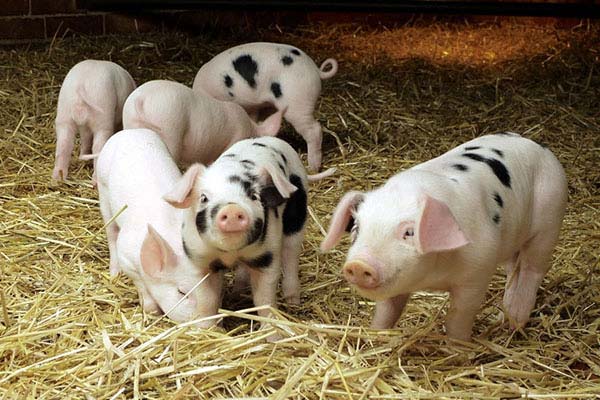

Classification of organic fertilizers into 4 types:
- Fresh - the fertilizer is stored for no more than 3 months. The composition contains a large amount of nitrogen, acid and other components harmful to agricultural crops. The introduction of fresh manure into the soil can lead to the death of agricultural crops. If there is an "urgent" need to use organic feeding, then pork manure is mixed with horse manure and then added to the soil.
- Semi-overripe - shelf life from 3 months to six months.The composition contains fewer con components, but they are still present. It is allowed to use rotted manure at the end of autumn, but in a different ratio - per sq. m. of soil no more than 3 kg. organic raw materials. Organic matter is scattered over the top layer of the soil, always after harvesting the entire crop.
- Overripe - storage duration from six months to a year. The composition of the manure is less dangerous for agricultural crops. There is practically no acid in this form of organic matter, the nitrogen content is gradually approaching the optimum. It can be used as an autumn top dressing per sq. m soil 7 kg. organics. Overripe manure dries out greatly during storage, excess moisture "leaves" it, so it loses in weight by almost half of the original.
- Humus - manure storage lasts more than a year. The most ideal type of organic fertilizer that can be used to equip the soil with nutrients throughout the year. The humus contains no "harmful" components (the acid is completely neutralized, the nitrogen ratio has reached the optimal level). During long-term storage of manure, pathogenic microorganisms (viruses, bacteria, helminth eggs, fungal spores) and weed seeds are destroyed, so organic fertilizer becomes absolutely safe for cultivated plants.

